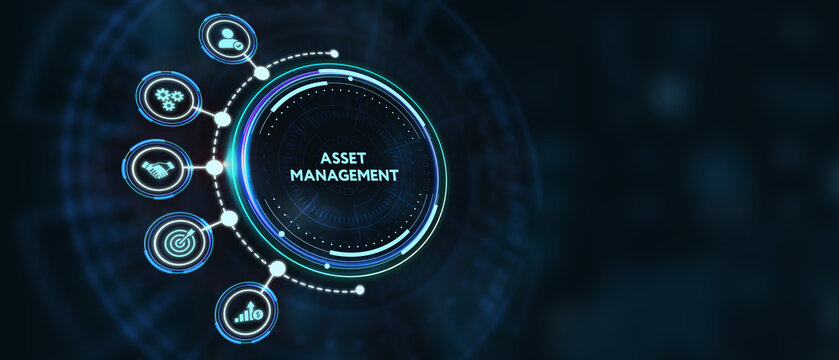Importance of Managing IT Assets in Today’s Technology-Driven Businesses
In the modern business landscape, effective management of IT assets is crucial. With the rapid advancement of technology, organizations must ensure their IT assets are utilized efficiently to remain competitive. Proper IT Asset Management (ITAM) helps businesses maximize the value of their technology investments, reduce costs, and mitigate risks.
What is IT Asset Management (ITAM)?

IT Asset Management (ITAM) is the systematic process of ensuring an organization’s IT assets are accounted for, deployed, maintained, upgraded, and disposed of when necessary. ITAM encompasses both tangible and intangible assets, ensuring they are tracked and optimized to support the organization’s goals.
Understanding IT Asset Management
1.1 What is IT Asset Management?
Definition and Key Concepts
What is IT asset management? ITAM involves the oversight and management of an organization’s IT assets throughout their lifecycle. This includes planning, procurement, deployment, maintenance, and retirement of assets. The goal of ITAM is to optimize the use of IT assets, ensuring they deliver maximum value while minimizing costs and risks.
Ensuring Assets are Accounted for, Deployed, Maintained, Upgraded, and Disposed of Efficiently
Effective ITAM ensures that every IT asset is tracked and managed throughout its lifecycle. This process includes:
- Accounting for Assets: Keeping an accurate inventory of all IT assets.
- Deploying Assets: Ensuring assets are distributed and installed correctly.
- Maintaining Assets: Performing regular maintenance to keep assets in good working condition.
- Upgrading Assets: Updating assets to meet evolving needs and standards.
- Disposing of Assets: Properly retiring and disposing of assets to mitigate security risks and comply with regulations.
1.2 Types of IT Assets
Hardware
Hardware assets include physical devices such as:
- Computers: Desktops, laptops, and workstations.
- Servers: Centralized computers that manage network resources.
- Network Devices: Routers, switches, and other networking equipment.
Software
Software assets encompass:
- Licenses: Legal permissions to use software applications.
- Applications: Programs that perform specific tasks for users.
Network Assets
Network assets are critical components that facilitate communication and data exchange within an organization:
- Routers: Devices that route data between networks.
- Switches: Devices that connect and manage multiple devices within a network.
Cloud Assets
Cloud assets include resources and services hosted in the cloud:
- Services: Applications and platforms provided over the internet.
- Storage: Data storage solutions hosted by third-party providers.
By understanding what IT asset management is and the types of assets involved, organizations can develop effective strategies to manage their IT resources efficiently and securely.
The Importance of IT Asset Management
2.1 Financial Management
Cost Savings Through Efficient Asset Utilization
Understanding what IT asset management is helps organizations optimize the use of their IT assets, resulting in significant cost savings. By efficiently utilizing assets, businesses can avoid unnecessary expenses and extend the life of their current investments.
Reducing Unnecessary Purchases and Cutting Licensing and Support Costs
IT asset management allows for better tracking and documentation of assets, reducing the need for redundant purchases. Additionally, it helps in managing software licenses and support contracts, ensuring that organizations only pay for what they actually use.
2.2 Risk Management
Reducing Security Risks and Ensuring Compliance
Effective IT asset management is crucial for mitigating security risks. By keeping an accurate inventory of assets, organizations can ensure that all devices and software are up-to-date with the latest security patches. Furthermore, ITAM helps in maintaining compliance with industry regulations and standards, reducing the risk of legal and financial penalties.
2.3 Operational Efficiency
Streamlining Processes and Improving Productivity
IT asset management streamlines the processes involved in tracking and managing IT assets. This efficiency reduces the time and effort required to maintain assets, allowing IT teams to focus on more strategic tasks. Improved operational efficiency also leads to increased productivity across the organization.
2.4 Strategic Decision-Making
Data-Driven Insights for Better Planning and Forecasting
By implementing IT asset management, organizations gain access to valuable data about their IT assets. This data provides insights that are crucial for strategic planning and forecasting. Understanding asset utilization, lifecycle stages, and associated costs enables better decision-making and resource allocation.
Key Components of IT Asset Management
3.1 Asset Discovery and Inventory
Methods for Tracking and Documenting Assets
The first step in understanding what IT asset management is involves asset discovery and inventory. Various methods, such as automated scanning tools and manual audits, are used to track and document all IT assets within an organization. This process ensures that every asset is accounted for and properly documented.
3.2 Asset Lifecycle Management

Stages: Planning, Procurement, Deployment, Maintenance, Retirement
Effective IT asset management encompasses the entire lifecycle of an asset:
- Planning: Identifying the need for new assets.
- Procurement: Acquiring assets through purchase or lease.
- Deployment: Installing and configuring assets for use.
- Maintenance: Performing regular upkeep and updates.
- Retirement: Disposing of assets securely at the end of their lifecycle.
Calculating Lifecycle Costs for Better Financial Planning
Understanding the total cost of ownership is a key aspect of IT asset management. By calculating lifecycle costs, organizations can make informed financial decisions, ensuring they allocate budgets effectively for maintenance, upgrades, and replacements.
3.3 Compliance and Regulatory Requirements
Ensuring Adherence to Laws and Regulations
IT asset management helps organizations comply with various laws and regulations related to data security and asset disposal. Properly managing assets ensures that sensitive information is protected and that the organization adheres to industry standards, reducing the risk of non-compliance penalties.
3.4 Performance Monitoring and Reporting
Tools and Techniques for Performance Assessment
Effective IT asset management includes continuous performance monitoring and reporting. Utilizing specialized tools, organizations can assess the performance of their IT assets, identify areas for improvement, and ensure that assets are functioning optimally. Regular reporting provides insights that support proactive maintenance and informed decision-making.
Implementing IT Asset Management in Your Organization
4.1 Planning and Strategy
Setting Goals and Defining Scope
The first step in implementing IT asset management in your organization is to set clear goals and define the scope of your ITAM program. Determine what you aim to achieve, such as reducing costs, improving compliance, or enhancing operational efficiency. Clearly defining the scope helps in focusing efforts and resources on the most critical areas.
Start by Evaluating and Analyzing Current Processes and Infrastructure
To implement IT asset management effectively, start by evaluating your current IT processes and infrastructure. Analyze existing asset management practices to identify gaps and areas for improvement. This evaluation provides a baseline for developing a comprehensive ITAM strategy tailored to your organization’s needs.
4.2 Tools and Technologies
Overview of ITAM Software and Solutions
Choosing the right tools and technologies is crucial for effective IT asset management. There are various ITAM software solutions available that offer functionalities like asset tracking, lifecycle management, and compliance reporting. These tools help automate and streamline ITAM processes, making them more efficient and accurate.
Importance of Choosing Flexible Solutions that Can Grow with the Organization
When selecting ITAM software, it’s essential to choose solutions that are flexible and scalable. As your organization grows, your ITAM needs will evolve. Opt for software that can adapt to changing requirements, support additional assets, and integrate with other IT systems. This flexibility ensures long-term success and maximizes the return on investment.
4.3 Best Practices

Tips for Successful Implementation
Implementing IT asset management successfully requires following best practices. Some key tips include:
- Establishing Clear Policies and Procedures: Define and document ITAM policies to ensure consistency and compliance.
- Training and Educating Staff: Ensure that all employees understand the importance of ITAM and their roles in the process.
- Regular Audits and Reviews: Conduct periodic audits to verify the accuracy of asset records and identify areas for improvement.
Embracing a Culture of Collaboration and Transparency
A successful ITAM program relies on collaboration and transparency across the organization. Encourage open communication between IT and other departments, and provide access to ITAM data to relevant stakeholders. This collaborative approach helps in making informed decisions and enhances the overall effectiveness of ITAM.
4.4 Challenges and Solutions
Common Obstacles and How to Overcome Them
Implementing IT asset management can come with challenges, but these can be overcome with the right strategies:
- Resistance to Change: Employees may resist new ITAM processes. Overcome this by communicating the benefits and providing adequate training.
- Data Accuracy: Maintaining accurate asset data can be challenging. Use automated tools for asset tracking and conduct regular audits.
- Resource Constraints: Limited resources can hinder ITAM implementation. Prioritize critical areas and gradually expand the scope as resources become available.
By addressing these challenges proactively, organizations can implement a robust IT asset management program that delivers significant benefits in terms of cost savings, risk reduction, and operational efficiency.
Benefits of Effective IT Asset Management
5.1 Providing a Single Source of Truth
Centralized Information Management to Avoid Chaos and Inaccuracies
Understanding what IT asset management is highlights the importance of having a centralized system to manage all IT assets. This single source of truth eliminates chaos and inaccuracies by ensuring that all asset information is stored in one place. This centralization facilitates better decision-making and enhances the overall efficiency of asset management processes.
5.2 Improving Utilization and Eliminating Waste
Saving Money by Avoiding Unnecessary Purchases and Improving Asset Utilization
Effective IT asset management helps organizations optimize the utilization of their IT assets. By accurately tracking and managing assets, businesses can avoid unnecessary purchases and reduce waste. This not only saves money but also ensures that existing assets are used to their fullest potential, enhancing overall operational efficiency.
5.3 Enabling Productivity Without Compromising Reliability
Supporting Modern Practices Like DevOps and SRE Principles
Implementing IT asset management supports modern IT practices such as DevOps and Site Reliability Engineering (SRE). By providing a structured approach to managing IT assets, ITAM ensures that new functionalities and services are delivered quickly and reliably. This balance between speed and reliability is crucial for maintaining high productivity levels without compromising on quality.
5.4 Supporting ITSM Practices and Enabling Teams Across Organizations
Enhancing ITIL Processes and Enabling Teams to Deliver Value Quickly
What is IT asset management’s role in IT service management (ITSM)? ITAM is essential for supporting IT Infrastructure Library (ITIL) processes, including change, incident, and problem management. By providing accurate and up-to-date asset information, ITAM enables teams to deliver value more quickly and predict the impact of changes before they occur. This proactive approach enhances overall service delivery and supports organizational growth.
Recap: Summarize Key Points
In conclusion, understanding what IT asset management is and implementing it effectively can bring numerous benefits to an organization. ITAM provides a single source of truth, improves asset utilization, supports modern IT practices, and enhances ITSM processes. By centralizing information management, reducing waste, enabling productivity, and supporting service management, ITAM ensures that organizations can maximize the value of their IT assets.
Call to Action: Encouraging Businesses to Adopt ITAM with Monmouth Computer Wire Recycling
For businesses looking to adopt IT asset management, Monmouth Computer Wire Recycling offers comprehensive ITAM solutions that cater to all your needs. Our expertise in IT asset management helps organizations streamline their processes, reduce costs, and enhance operational efficiency. Contact us today to learn more about how our ITAM services can benefit your organization.

